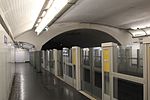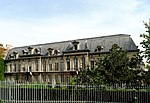Lycée Charlemagne

The Lycée Charlemagne is located in the Marais quarter of the 4th arrondissement of Paris, the capital city of France. Constructed many centuries before it became a lycée, the building originally served as the home of the Order of the Jesuits. The lycée itself was founded by Napoléon Bonaparte and celebrated its bicentennial in 2004. The lycée is directly connected to the Collège Charlemagne (formerly known as le petit lycée) which is located directly across from it, on the Rue Charlemagne. Also the lycée offers two-year courses preparing students for entry to the Grandes écoles, divided into seven classes: three first-year classes: two of mathematics, physics, and engineering science one of physics, chemistry, and engineering science four second-year classes: two of mathematics and physics two of physics and chemistry.
Excerpt from the Wikipedia article Lycée Charlemagne (License: CC BY-SA 3.0, Authors, Images).Lycée Charlemagne
Rue Charlemagne, Paris 4th Arrondissement (Paris)
Geographical coordinates (GPS) Address Nearby Places Show on map
Geographical coordinates (GPS)
| Latitude | Longitude |
|---|---|
| N 48.853888888889 ° | E 2.36 ° |
Address
Collège Charlemagne
Rue Charlemagne
75004 Paris, 4th Arrondissement (Paris)
Ile-de-France, France
Open on Google Maps









